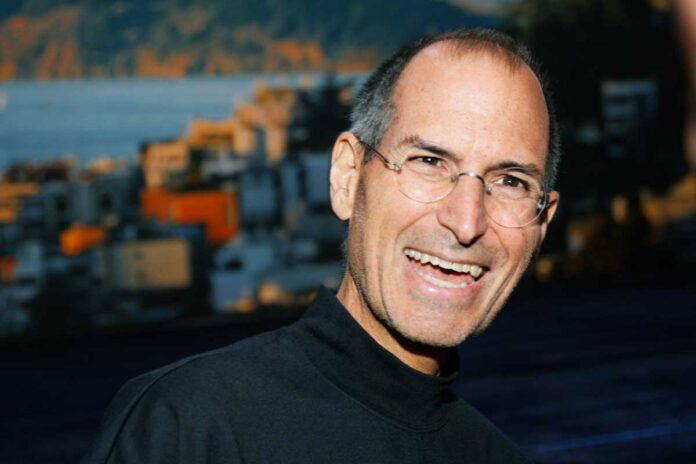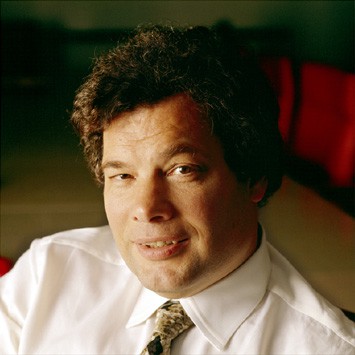NeXT saves Apple
In the mid-nineties, Apple was in the worst possible condition. In the late eighties and early nineties, John Sculley had indeed been successful in the publishing industry. Products such as the PowerBook family boosted sales for some time, but with the Macintosh, Apple never managed to approach the sales figures of Microsoft, the manufacturer of IBM-compatible PCs with the DOS operating system. When the Mac was launched in 1984, Bill Gates had publicly praised Apple computers as an innovative PC platform.
But behind the back of Steve Jobs, the founder of Microsoft went about stealing the ideas of Macintosh for his Windows system. Jobs got wind of it and put Gates angrily to task: “You’re ripping us off!” he shouted. “I trusted you, and now you’re stealing from us!” The Microsoft boss just sat there coolly, looking Steve in the eye, before hurling back, in his squeaky voice. “Well, Steve, I think there’s more than one way of looking at it. I think it’s more like we both had this rich neighbor named Xerox and I broke into his house to steal the TV set and found out that you had already stolen it.”
After the departure of Jobs, even Sculley was not able to prevent Microsoft from constantly developing the Windows system and step by step adopting details from the Mac’s graphical user interface in to their software. Apple was vulnerable to blackmail, as Microsoft made important applications for the Mac. After Bill Gates had threatened to discontinue the development of Microsoft Office for Mac if Apple acted against Windows, Apple’s CEO licensed certain elements of the Mac GUI to the competitor from Redmond in 1986. Sculley had to look on helplessly as the Microsoft Company shamelessly shifted agreement limits in their favor with each new version of Windows.
Even Apple’s lawsuit in 1988 could not stop the software giant. In 1992, the court ruled that Apple could not claim any copyright on the graphical user interface or protect the idea of the virtual desktop as a patent. Apple ultimately failed in stopping Windows from copying at the US Supreme Court in 1994. Declining revenues and increased difficulties in the development department of aggravated the sense of crisis at Apple. In June 1993, the management board of Apple lost patience.
Around this time Steve Jobs was asked in an oral history interview about the shape of Apple. Jobs didn’t blame Microsoft for the crisis but only John Sculley and his team:
When I left Apple it was a two billion dollar company. We were Fortune 300 and something. We were 350. When the Mac was introduced we were a billion dollar corporation; so Apple grew from nothing to two billion dollars while I was there. That’s a pretty high growth rate. It grew five times since I left basically on the back of the Macintosh. I think what’s happened since I left in terms of growth rate has been trivial compared with what it was like when I was there. What ruined Apple wasn’t growth. What ruined Apple was values. John Sculley ruined Apple and he ruined it by bringing a set of values to the top of Apple which were corrupt and corrupted some of the top people who were there, drove out some of the ones who were not corruptible, and brought in more corrupt ones and paid themselves collectively tens of millions of dollars and cared more about their own glory and wealth than they did about what built Apple in the first place–which was making great computers for people to use.
They didn’t care about that anymore. They didn’t have a clue about how to do it and they didn’t take any time to find out because that’s not what they cared about. They cared about making a lot of money so they had this wonderful thing that a lot of brilliant people made called the Macintosh and they got very greedy and instead of following the original trajectory of the original vision–which was to make this thing an appliance, to get this out there to as many people as possible–they went for profits and they made outlandish profits for about four years. Apple was one of the most profitable companies in America for about four years.
What that cost them was the future. What they should have been doing was making reasonable profits and going for market share, which was what we always tried to do. Macintosh would have had a thirty- three percent market share right now, maybe even higher, maybe it would have even been Microsoft but we’ll never know. Now its got a single digit market share and falling. There’s no way to ever get that moment in time back. The Macintosh will die in another few years and its really sad. The problem is this: no one at Apple has a clue as to how to create the next Macintosh because no one running any part of Apple was there when the Macintosh was made–or any other product at Apple. They’ve just been living off that one thing now for over a decade and the last attempt was the Newton and you know what happened to that. It’s kind of tragic, but as unemotionally as I can be, that’s what’s happening. Unless somebody pulls a rabbit out of a hat, companies tend to have long glide slopes because of the installed bases. But Apple is just gliding down this slope and they’re loosing market share every year. Things start to spiral down once you get under a certain threshold. And when developers no longer write applications for your computer, that’s when it really starts to fall apart.
The Apple board at this point really had no clue how to save the company. They replaced Sculley by the German-born manager Michael Spindler, who was very experienced in sales and distribution for Europe. “The diesel” was an effective manager, but he lacked any inspiration. Neither could he get Apple out of the current crisis nor even succeed in selling the company to interested parties such as IBM, Sun Microsystems, or Philips. After a year and half, Spindler was replaced by the restructuring expert Gil Amelio. In 1996, a year after the successful launch of Windows 95, Amelio, above all, had to deal with the question about the future of the operating system, since Apple’s internal Copland project had failed spectacularly. There was a choice between BeOS of the former Apple manager Jean-Louis Gassée, and Steve Jobs’ system NeXTStep. Many myths surround the decision made in favor of Jobs which are still difficult to unravel today.
BeOS finally lost the race. In February 1997, Apple paid just under 430 million dollars for NeXT and the know-how of the company. Bill Gates only had to spare scorn and ridicule for the change in direction at Apple. “Do you really think Steve Jobs has anything there?” Gates asked the still reigning Apple CEO Amelio. “I know his technology, it’s nothing but a warmed-over UNIX, and you’ll never be able to make it work on your machines.” (…) “What the hell are you buying that garbage for?” Gates did not take NextStep for a serious rival. He suspected already that it was not just about a new operating system, but a coup that would bring Steve Jobs back in charge at Apple. Five months later, Amelio was actually fired from the board of directors. And in September 1997, Jobs took over the post of an interim CEO. At that time, Apple was about 90 days away from bankruptcy.
Read next page: Help from the archenemy




[…] The Legend of Steve Jobs – His Life and Career » Mac History. Steve Wozniak and Steve Jobs […]
[…] time Apple has used an iconic design for an iOS app. The original iOS calculator used a design that paid homage to the classic Braun ET44 calculator. Apple SVP of Industrial Design Jonathan Ive is well-known as […]
[…] time Apple has used an iconic design for an iOS app. The original iOS calculator used a design that paid homage to the classic Braun ET44 calculator. Apple SVP of Industrial Design Jonathan Ive is well-known as […]
[…] time Apple has used an iconic design for an iOS app. The original iOS calculator used a design that paid homage to the classic Braun ET44 calculator. Apple SVP of Industrial Design Jonathan Ive is well-known as […]
[…] of German designer Dieter Rams defender simplicity and functionalism to inspire Steve Jobs and his Apple universe, in addition to Banzi, which would connect his brain chips from the first approach to […]
[…] Dieter Rams, defensor p la simplicidad junto con el funcionalismo que inspiraría a Jobs y a su universo Apple, además p a Banzi, que conectaría los chips p su cerebro a partir p ose primer acercamiento a la […]
[…] was the graphical user interface. I thought it was the best thing I’d ever seen in my life” (Steve Jobs 1995) Inspired by this amazing experience in 1983 Steve Jobs brought out “The Apple […]
[…] influenced the designers at Apple. See here and here. I’m not about to have a rant about the brazen similarities, its more to […]
[…] read about Steve Jobs and Dieter Rams. It talks about how Steve Jobs was highly influenced by the many years of work and design success […]
[…] Dernbach, Christoph. “The Legend of Steve Jobs – His Life and Career.” Mac History, Mac History, 1 Feb. 2015, https://www.mac-history.net/steve-jobs/2012-10-30/the-legend-of-steve-jobs-his-life-and-career […]
[…] Dieter Rams, defensor de la simplicidad y el funcionalismo que inspiraría a Steve Jobs y a su universo Apple, además de a Banzi, que conectaría los chips de su cerebro a partir de ese primer acercamiento a […]
[…] should regard Steve Jobs as a true legend who always led by example. He has an amazing and inspiring story that should instill a sense of […]